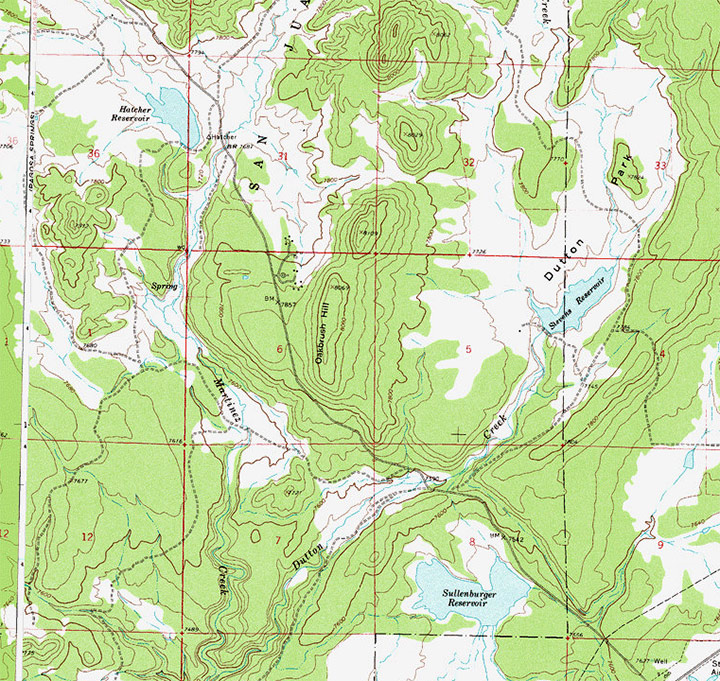The vibration of the pendulum was at right angles to my length. I saw that the crescent was designed to cross the region of the heart. It would fray the serge of my robe — it would return and repeat its operations — again — and again. Notwithstanding its terrifically wide sweep (some thirty feet or more), and the hissing vigor of its descent, sufficient to sunder these very walls of iron, still… the fraying of my robe would be all that, for several minutes, it would accomplish…
— Edgar Allan Poe, ‘The Pit and the Pendulum’, 1843.
In his short story from 1843, Edgar Allan Poe’s hero was being tortured by the Spanish Inquisition, strapped to a table in a rat-infested dungeon… beneath a massive, razor-sharp blade that swung back and forth like a pendulum, dropping almost imperceptibly closer to the hero’s chest with each oscillation…

We knew, of course, that the hero would be rescued in the nick of time, because the story was written in the first person. (Rescued, in this particular case, by the arrival of the French army.)
We don’t know, yet, if anyone will arrive to save the neighbors living in the vicinity of Oakbrush Hill, from a plan for a vast gravel pit.
At last night’s Pagosa Area Water and Sanitation District (PAWSD) Board meeting, several concerned citizens presented their concerns to the four Board members in attendance. Some of the citizens expressed their apprehension that a large gravel pit operation atop Oakbrush Hill could potentially pollute the community’s drinking water supplies.
The PAWSD board and staff expressed confidence that state and federal regulations and enforcement, controlling mining operations, would be sufficient to prevent environmental damage.
The citizens group did not sound convinced.
Earlier in the week, a couple of Daily Post readers, also concerned about the Oakbrush Hill gravel pit, asked if I was aware of the ephemeral or intermittent creeks that flow downhill from the hilltop site of C&J Gravel’s proposed gravel pit east of Piedra Road, near Lake Hatcher and Stevens Reservoir.
Lake Hatcher is a primary storage reservoir of Pagosa Lakes drinking water and has a usable capacity of about 880 acre-feet. Stevens Reservoir is larger, with a usable capacity of about 1,730 acre-feet, but only rarely provides drinking water because no direct pipeline has ever been built to a PAWSD treatment facility. (For comparison purposes, PAWSD sells about 1,250 acre-feet of water annually, and much of that water comes from the West Fork diversion.)
My friends wanted to raise the question: could a gravel pit on Oakbrush Hill endanger our local drinking water supplies?

The old topographical map shown above shows Oakbrush Hill near the center of the map… and indicates some of the intermittent creeks mentioned by my friends, shown as dotted blue lines. Some flow into Martinez Creek. Some flow into Stevens Reservoir. None of them flow into Lake Hatcher.
I believe this map dates back to the 1970s, considering that it shows no residential development around Sullenburger Reservoir (now known as Lake Pagosa) nor around Lake Hatcher. But it does show a little cluster of buildings immediately west of Oakbrush Hill, near the center of the map.
Times have changed. I doubt anyone would have had the slightest objection to an Oakbrush Hill gravel mine in 1970.
A few years ago, C&J Gravel applied for a gravel mining permit on a 320-acre homestead owned by Jac and Lee Constant, 12 miles south of downtown Pagosa along Trujillo Road. I had the pleasure of getting to know the Constants while researching a Daily Post article about their proposed gravel pit; you can read the story here.
As with the current Oakbrush Hill gravel permit application, some of the neighbors along Trujillo Road objected to a mining operation on the Constant’s homestead. But the thing that really killed the application, in the end, was not complaints from the immediate neighbors, but objections by people living in the Pagosa Lakes subdivisions whose gravel roads would have been impacted by daily gravel trucks delivering gravel to other locations.
True story. People living on gravel roads that require regular applications of gravel, did not want the County government to allow gravel trucks to deliver gravel to other neighborhoods that also require regular applications of gravel.
The Board of County Commissioners sided with the residential neighborhoods, and denied C&J Gravel’s Trujillo Road application.
Not that I am ‘taking sides’ in this Oakbrush Hill controversy. I see both sides of the controversy as having valid arguments.
While researching the Trujillo Road gravel pit controversy, (the story linked above), I learned that, here in Archuleta County, the type of rock that makes the best gravel — for roads and other construction uses — is often found along the tops of ridges rather than in low-lying areas. Something to do with the behavior of the glaciers, 10,000 years ago, I suppose. Or maybe a joke played on Archuleta County by someone up in Heaven with a sense of humor.
So I was not surprised to learn that the previous Oakbrush Hill mining operations, and the proposed new gravel mine, would be located atop a ridge 500 feet higher than most of the Pagosa Lakes subdivisions.
The main problem facing C&J Gravel might not be water issues, or dust, or noise, but rather, the effect of 40-ton gravel trucks running up and down Piedra Road. One website I came across suggests that each axle of a heavy semi has 625 times the impact of each axle on a typical sedan.
Was Piedra Road engineered to handle these types of trucks?
That’s really two questions, the first being: “Does anyone even know how Piedra Road was engineered?”
And the second being: “How many trucks per day are we talking about?”
